Blood can say a lot about a person, because it is essentially the carrier of life and destiny. Did you know there's even a blood type diet that was all the rage once upon a time? Some fat people are still interested in this and study the list of allowed products.
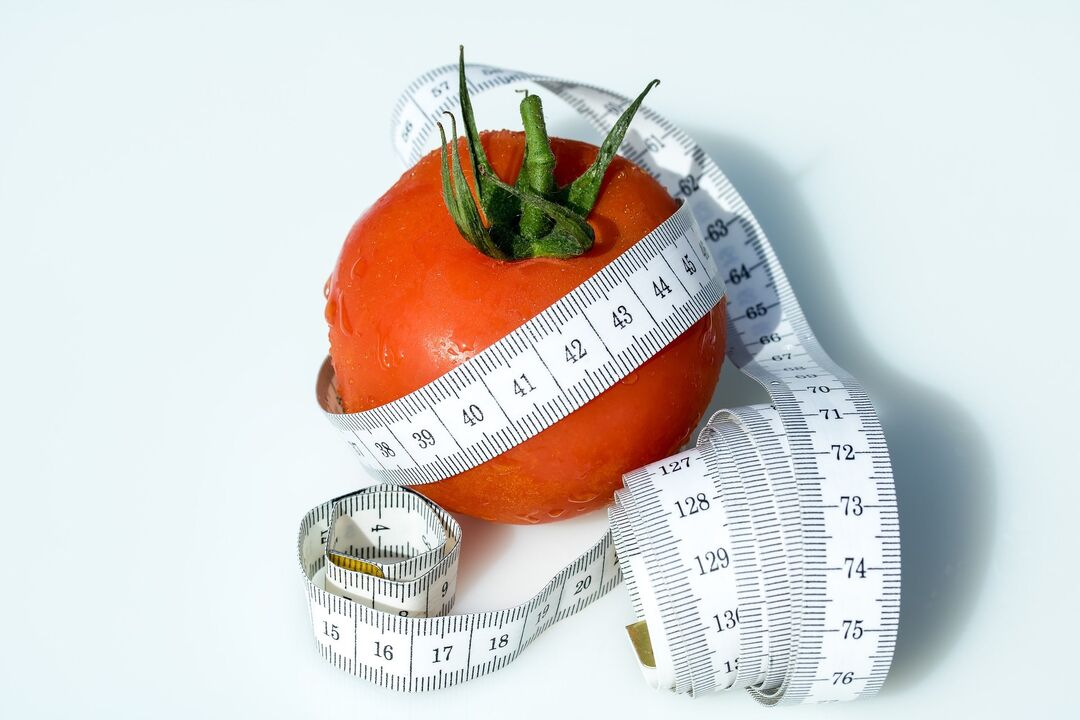
We should say right away that this technique has been criticized more than once by doctors and has no scientific basis. But forewarned is forearmed, so let's try to learn everything about this diet.
History of dieting
Once upon a time, people believed that everyone had the same blood. Do you remember the tale of Mowgli? "You and I are of the same blood—you and I! "But soon, after they tried to share their blood with the sick and wounded, a theory arose that the blood was actually different.
Many scientific studies and experiments were carried out with animals and humans, but it was not until 1900 that three blood groups were discovered by Karl Landsteiner, and a little later the fourth was discovered by his students.
Currently, the world has adopted an alphanumeric classification:
- O or I – first.
- A (II) – second.
- B (III) – third;
- AB (IV) – fourth.
The most common blood groups in the world are the first and second blood groups. Its carriers are 80% of all humanity. The third is less common, 15% have it and the fourth is considered the rarest and is represented by only 5%.
The American naturopathic doctor Peter D'Adamo proposed in the late twentieth century that if certain human diseases are directly related to genetic characteristics and often depend on blood type, then it is possible that diet according to blood type is also possible. He asked the preferences for certain foods from each of his patients and formulated the right diet for each group. All products were divided into useful, undesirable and neutral.
D'Adamo has written several books on nutrition. They were hugely successful among American readers and became bestsellers. Then the idea of "4 blood groups - 4 paths to health" spread around the world and everyone who wanted to lose weight rushed to try the new diet.
What is she?
Basic principles and rules
Diet according to blood groups comes down to the following.
- In each period of human evolution, there was a certain diet, when it changed, the blood mutated and a new group appeared. And, therefore, for each group there is a core set of products.
- To keep your body in great shape, you need to eat like your ancestors with a certain blood type. Thanks to the biochemical connection of blood and food, the "right" foods are better absorbed, digested faster, increase metabolism and strengthen the immune system.
- If you exclude "wrong" foods from your diet, you can improve the performance of the body, promote health and prolong life.
An example is moving to another habitat or even tourism, when the local unusual cuisine is not accepted by the body and health problems begin.
If a resident of the Far North, who has been eating fatty protein foods all his life, decides to move to Europe with its high-carb cuisine, then there is a high risk of diabetes and digestive problems.
You don't even have to go far for examples, look around. Some people hate milk, others prefer plant-based foods, and others will simply starve if they don't eat a large piece of meat. Perhaps this is not without reason?
General dining table for all groups
Let's get to know the research of Dr. D'Adamo, who divided foods according to blood group, highlighting prohibited, permitted and neutral.
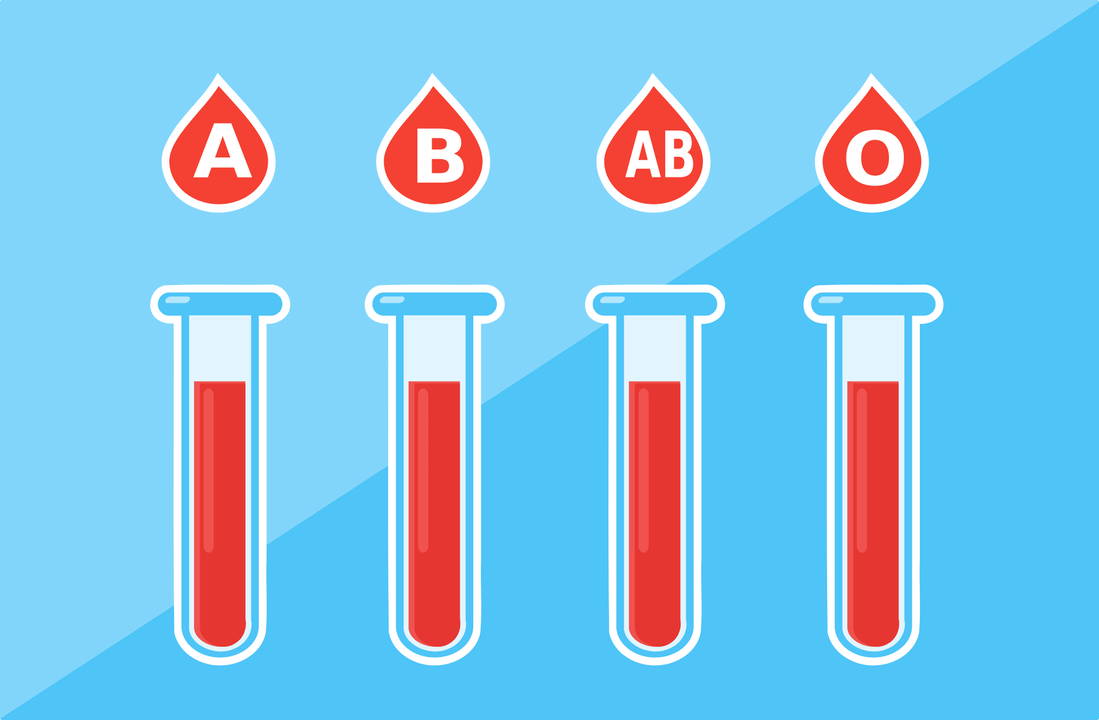
Legend:
- products to be restricted are indicated by the "-" symbol.
- allowed – "+"?
- neutral – "0".
| Product name | Club | blood | ||
|---|---|---|---|---|
| I | II | III | IV | |
Cereals and flour products |
||||
| Bagels | — | — | — | 0 |
| Rice wafers | 0 | + | + | + |
| Warm yeast products | — | — | 0 | 0 |
| Buckwheat | 0 | + | — | — |
| Corn starch | — | 0 | — | — |
| Semolina | — | — | 0 | 0 |
| Pearl barley | 0 | 0 | — | 0 |
| Barley porridge | 0 | 0 | — | 0 |
| Corn | — | 0 | — | — |
| Pasta | — | — | 0 | 0 |
| Buckwheat flour | 0 | + | — | — |
| Wheat flour (from hard varieties) | — | — | 0 | 0 |
| Cornmeal and flour | — | 0 | — | — |
| Oatmeal | — | + | + | + |
| Rye flour | 0 | + | — | + |
| Muesli | — | — | — | 0 |
| "Cracker" cookies | — | — | 0 | 0 |
| Oatmeal cookies | — | 0 | + | 0 |
| Millet | 0 | 0 | + | + |
| Rye gingerbread | 0 | — | 0 | 0 |
| Wheat | — | — | — | 0 |
| Rice | 0 | 0 | + | + |
| rye | 0 | + | — | 0 |
| Bread with grain | — | — | — | 0 |
| Whole wheat bread | — | — | — | 0 |
| Spelled bread | 0 | 0 | 0 | 0 |
| Rye bread | 0 | 0 | 0 | 0 |
| Wheat bread | — | 0 | + | 0 |
| Rye bread | 0 | 0 | — | + |
| Rye bread | 0 | + | — | + |
| Cornflakes | — | 0 | — | — |
| Cereals | — | 0 | + | + |
| Wheat flakes | — | — | — | 0 |
| Barley | 0 | 0 | — | 0 |
Juices and drinks |
||||
| Apricot | 0 | + | 0 | 0 |
| Cherry plum | + | + | 0 | 0 |
| Pineapple | + | + | + | 0 |
| Orange | — | — | 0 | — |
| Birch | 0 | 0 | 0 | 0 |
| Grape | 0 | 0 | + | + |
| Cherry | + | + | 0 | + |
| Pomegranate | 0 | 0 | — | — |
| Grapefruit | 0 | + | 0 | 0 |
| Cabbage | — | 0 | + | + |
| Cranberry | 0 | 0 | + | + |
| Citric | 0 | + | 0 | 0 |
| Carrot | 0 | + | 0 | 0 |
| Cucumber | 0 | 0 | 0 | 0 |
| Celery | 0 | + | 0 | + |
| Plum | + | + | 0 | 0 |
| Tomato | 0 | — | — | 0 |
| cider | — | 0 | 0 | 0 |
| apple | — | 0 | 0 | 0 |
Decoctions and herbal teas |
||||
| Hawthorn | 0 | + | 0 | + |
| Valerian | 0 | + | 0 | 0 |
| Ginseng | 0 | + | + | + |
| Balsamwort | — | + | 0 | 0 |
| Strawberry leaves | — | 0 | 0 | + |
| Linden | + | 0 | — | — |
| Burdock | — | + | 0 | + |
| Raspberries | 0 | 0 | + | 0 |
| Coltsfoot | — | 0 | — | — |
| Mint | 0 | 0 | 0 | 0 |
| Dandelion | + | 0 | 0 | 0 |
| Parsley | + | 0 | + | 0 |
| Chamomile | 0 | + | 0 | + |
| Licorice root | 0 | 0 | + | + |
| Yarrow | 0 | 0 | 0 | 0 |
| Thyme | 0 | 0 | 0 | 0 |
| Echinacea | 0 | + | 0 | + |
| Rosehip berries | + | + | + | + |
Dairy |
||||
| Whole milk | — | — | 0 | — |
| Yoghurt | — | 0 | + | + |
| Food grade casein | — | — | 0 | 0 |
| Kefir | — | 0 | + | + |
| Goat milk | — | 0 | + | + |
| Skimmed milk | — | — | + | 0 |
| Whey | — | — | 0 | 0 |
| Ice cream | — | — | — | — |
| Cream | — | — | 0 | — |
| Whipping cream | — | 0 | + | + |
| Cow's milk cheese | — | — | 0 | 0 |
| Sheep cheese | 0 | 0 | + | + |
| Processed cheese | — | 0 | 0 | — |
| Cheese cheese | 0 | 0 | + | + |
| Homemade cottage cheese | 0 | 0 | + | + |
Oil and fats |
||||
| Cod liver oil | 0 | 0 | 0 | 0 |
| Margarine | 0 | 0 | — | — |
| Peanut butter | — | — | — | 0 |
| Coconut oil | — | — | — | — |
| Corn oil | — | — | — | — |
| Linseed oil | + | + | 0 | 0 |
| Olive oil | + | + | + | + |
| Sunflower oil | 0 | 0 | — | — |
| Butter | 0 | — | 0 | — |
| Soybean oil | 0 | 0 | — | 0 |
| Cottonseed oil | — | — | — | — |
Nuts and seeds |
||||
| Peanut | — | + | — | + |
| Walnuts | + | 0 | 0 | + |
| Pine | 0 | 0 | — | 0 |
| almonds | 0 | 0 | 0 | 0 |
| Hazel | 0 | 0 | — | — |
| Poppy seeds | — | 0 | + | + |
| Sunflower seeds | 0 | 0 | — | — |
| Pumpkin seeds | + | + | — | — |
| Peanuts from Aegina | — | — | — | 0 |
Vegetables and mushrooms |
||||
| Sweet potato | + | — | + | + |
| Swede | 0 | 0 | + | 0 |
| Oyster mushrooms | 0 | + | 0 | 0 |
| Daikon | 0 | 0 | 0 | 0 |
| Zucchini, zucchini | 0 | 0 | 0 | 0 |
| white cabbage | — | — | + | 0 |
| Broccoli | + | + | + | + |
| Brussels sprouts | — | 0 | + | 0 |
| Chinese cabbage | — | — | + | 0 |
| Red cabbage | — | — | + | 0 |
| Cabbage | + | + | + | + |
| Cauliflower | — | — | + | + |
| Potato | — | — | — | 0 |
| A type of cabbage | + | + | 0 | 0 |
| Cardamom | + | + | + | + |
| Fresh onion | 0 | + | 0 | 0 |
| Leek | + | + | 0 | 0 |
| Onion bulb | + | + | 0 | 0 |
| Carrot | 0 | + | + | 0 |
| cucumbers | 0 | 0 | 0 | + |
| Parsnip | + | + | 0 | + |
| Hot pepper | + | — | + | + |
| Sweet pepper | 0 | — | + | + |
| Rhubarb | — | — | — | — |
| Radish | 0 | 0 | — | — |
| Radish | 0 | 0 | — | — |
| Turnip (turnip) | + | + | 0 | 0 |
| Head of lettuce | 0 | 0 | 0 | 0 |
| Lettuce leaf | 0 | 0 | 0 | — |
| Beetroot | 0 | 0 | 0 | 0 |
| Beetroot | + | + | + | + |
| Celery | 0 | 0 | 0 | + |
| Asparagus | 0 | 0 | 0 | 0 |
| Tomatoes | 0 | — | — | 0 |
| Jerusalem artichoke | + | + | 0 | 0 |
| Pumpkin | + | + | — | 0 |
| Chicory | + | + | 0 | 0 |
| Champignons | — | — | 0 | 0 |
| Spinach | + | + | 0 | 0 |
Legumes |
||||
| Soy | 0 | + | + | + |
| Navy Beans | — | — | + | + |
| Black beans | 0 | + | — | — |
| Peas | 0 | 0 | 0 | 0 |
| Peas | 0 | 0 | 0 | 0 |
| Soy milk | + | + | 0 | 0 |
| Soy cheese | + | + | 0 | 0 |
| white beans | 0 | 0 | 0 | 0 |
| Variety of beans | + | + | — | + |
| Lentils | — | + | — | + |
Herbs and spices |
||||
| Vanilla | — | 0 | 0 | 0 |
| Cloves | 0 | 0 | 0 | 0 |
| Mustard | 0 | + | 0 | 0 |
| Fruit jam and jelly | 0 | 0 | 0 | 0 |
| Ketchup | — | — | — | — |
| Coriander | 0 | 0 | 0 | 0 |
| Cinnamon | — | 0 | — | 0 |
| Laurel | 0 | 0 | 0 | 0 |
| Mayonnaise | 0 | — | — | 0 |
| Honey | 0 | 0 | 0 | 0 |
| Nutmeg | — | 0 | 0 | 0 |
| Paprika | 0 | 0 | 0 | 0 |
| Pepper curry | + | 0 | + | + |
| Black pepper | — | — | 0 | — |
| Parsley | + | 0 | + | + |
| Sugar | 0 | 0 | 0 | 0 |
| Pickle and marinade | — | 0 | 0 | — |
| Cumin | 0 | 0 | 0 | 0 |
| Anise | 0 | 0 | 0 | 0 |
| white vinegar | — | — | 0 | — |
| Wine vinegar | — | — | 0 | — |
| apple cider vinegar | — | — | 0 | — |
| Fennel | 0 | 0 | 0 | 0 |
| Horseradish | 0 | 0 | + | + |
| Chocolate | 0 | 0 | 0 | 0 |
Fruits and berries |
||||
| Avocado | — | 0 | — | — |
| Cherry plum | + | + | + | + |
| A pineapple | 0 | + | + | + |
| Orange | — | — | 0 | — |
| Watermelon | 0 | 0 | 0 | 0 |
| Banana | 0 | — | + | — |
| Barberry | 0 | — | — | — |
| Cowberry | 0 | + | + | + |
| Grape | 0 | 0 | + | + |
| Cherry | 0 | + | 0 | + |
| Blueberry | 0 | + | 0 | 0 |
| Pomegranate | 0 | 0 | — | — |
| Grapefruit | 0 | + | 0 | + |
| Pear | 0 | 0 | 0 | 0 |
| Melon | — | — | 0 | 0 |
| Black berry | — | + | 0 | 0 |
| Raisin | 0 | 0 | 0 | 0 |
| figs | + | + | 0 | + |
| Kiwi | 0 | 0 | 0 | + |
| strawberry | — | 0 | 0 | 0 |
| Cranberry | 0 | + | + | + |
| Gooseberry | 0 | 0 | 0 | + |
| Lemon | 0 | + | 0 | + |
| Raspberries | 0 | 0 | 0 | 0 |
| Mandarin | — | — | 0 | 0 |
| green olives | — | — | — | 0 |
| Black olives | — | — | — | 0 |
| Nectarine | 0 | 0 | 0 | 0 |
| Coconut coconut | — | — | + | + |
| Peach | 0 | 0 | 0 | 0 |
| Plum | + | + | + | + |
| Raisin | 0 | 0 | 0 | 0 |
| Persimmon | 0 | 0 | — | — |
| Cherry | + | + | 0 | + |
| Blueberry | 0 | + | 0 | 0 |
| Plums | + | + | 0 | 0 |
| apple | + | + | + | + |
Seafood |
||||
| Carp | 0 | + | 0 | 0 |
| Smelt | 0 | 0 | 0 | 0 |
| Catfish | — | — | 0 | 0 |
| Caviar | — | — | — | + |
| Squid | 0 | — | 0 | — |
| Flounder | 0 | — | + | — |
| Salmonidae | + | + | + | + |
| Smoked salmon | — | — | — | — |
| Mackerel | + | + | + | + |
| Seaweed | + | 0 | — | 0 |
| Sea bass | 0 | 0 | + | + |
| River perch | 0 | 0 | 0 | 0 |
| Sturgeon | + | 0 | + | + |
| Bib | + | — | + | — |
| crustaceans | 0 | — | — | — |
| Salted herring | — | — | + | — |
| Fresh herring | + | + | 0 | 0 |
| Salted herring | — | — | 0 | — |
| Whitefish | + | + | + | + |
| River pike | + | 0 | + | + |
| Som | — | — | 0 | 0 |
| Xander | 0 | + | + | + |
| Cod | + | + | + | + |
| Tuna fish | 0 | 0 | 0 | + |
| Acne | 0 | — | — | — |
| Mackerel | + | + | + | + |
| Trout | + | + | + | + |
| Cod | + | — | + | — |
Meat products, poultry, eggs |
||||
| Ham | — | — | — | — |
| Beef | + | — | 0 | — |
| Ground beef | + | — | 0 | — |
| Veal | + | — | 0 | — |
| Bacon | — | — | — | — |
| Lamb meat | + | — | + | + |
| Rabbit meat | 0 | — | + | + |
| Goose | — | — | — | — |
| Duck | 0 | — | — | — |
| Turkey meat | + | 0 | 0 | + |
| Broilers | 0 | 0 | — | — |
| Eggs | 0 | 0 | + | 0 |
| Chicken | 0 | 0 | — | — |
| Ham | — | — | — | — |
| Heart | + | — | — | — |
| Liver | + | — | 0 | 0 |
| Hello | — | — | 0 | 0 |
| Pork | — | — | — | — |
Other drinks |
||||
| White wine | 0 | 0 | 0 | 0 |
| Red wine | 0 | + | 0 | 0 |
| Drinking water | + | + | + | 0 |
| Vodka | — | — | — | — |
| Coca Cola | — | — | — | — |
| Cognac | — | — | — | — |
| Brown black | — | + | 0 | + |
| Lemonade | — | — | — | — |
| Alcohol tinctures | — | — | — | — |
| Beer | 0 | — | 0 | 0 |
| Soft drinks with soft drinks | + | — | — | 0 |
| Green tea | 0 | + | + | + |
| Black tea | — | — | 0 | — |
Nutrition according to blood group 1
The most common in the world is the first positive blood group. It is most often found among the Eastern Slavs and American Indians.
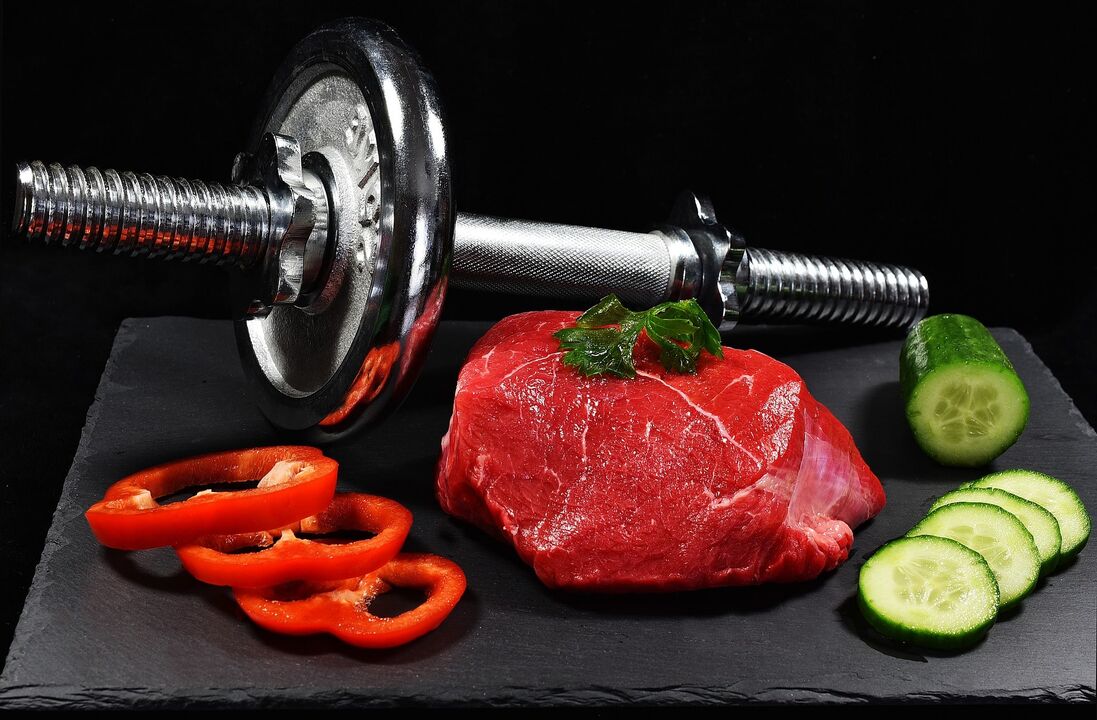
People with the first blood group are universal donors, that is, this type of blood is suitable for everyone. By the way, mosquitoes prefer the first blood group more than all others.
Characteristics of feeding behavior (hunter, carnivore)
Absolutely all ancient people living in a primitive community system had the first blood group and all the rest appeared through mutation.
Now remember the history of the Ancient World, archaeological excavations and the conclusions of scientists - 40, 000 years ago, primitive people lived by hunting and gathering. Their main diet consisted of meat, meat and more meat and only then roots, herbs and those few edible fruits and berries that grew wild in the forests.
Thus, the owners of the first group carry the genes of the most ancient hunters, and their body at the gene level requires as much protein as possible. The diet, unfortunately, is the poorest. If you decide on such a diet, then you will have to give up a huge number of your favorite foods.
The diet for the first blood group includes meat, fish and vegetables. It is better not to consume milk and its derivatives at all.
Allowed and prohibited products
| What can you eat | What to limit | Neutral products | |
|---|---|---|---|
| Meat | Veal, veal, lamb, turkey, offal (liver, heart), minced veal. | Ham, ham, smoked meats, pork, lard, goose. | Rabbit, duck meat, broiler chicken, chicken, eggs. |
| Fish and seafood | Halibut, sturgeon, seaweed, fresh herring, pike, cod, mackerel, trout, cod. | Salted and pickled herring, catfish, caviar, smoked salmon, catfish. | Carp, smelt, squid, squid, perch, pike, tuna, eel, crustaceans. |
| Oil | Olive and linseed. | Peanut, corn, cottonseed, soy. | Cod oil, margarine, soy, sunflower oil and butter. |
| Nuts and seeds | Nuts, pumpkin seeds. | Peanuts, poppy seeds, pistachios. | Almonds, hazelnuts, pine nuts, sunflower seeds. |
| Dairy | — | Almost all dairy products. | Sheep and cottage cheese, cottage cheese. |
| Vegetables and fruits | Broccoli, cabbage, kohlrabi, cardamom, leeks, onions, parsnips, hot peppers, turnips, Jerusalem artichokes, pumpkin, chicory, spinach, cherry plum, figs, plums, cherries, plums, apples. | White cabbage, Brussels sprouts, Chinese cabbage, red cabbage, cauliflower, potatoes, rhubarb, tangerines, lentils, avocados, oranges, cantaloupe, blueberries, tangerines, olives. | Zucchini, green onions, carrots, cucumbers, sweet peppers, radishes, radish, lettuce, lettuce, beets, celery, asparagus, tomatoes, black beans, peas, peas, white beans, pineapple, watermelon, banana, lingonberry, grapes, cherry, raspberry, pomegranate, grapefruit, pear, raisin, kiwi, cranberry, gooseberry, lemon, blackberry, nectarine, peach, raisin, persimmon, blackberry. |
Sample menu for one day
- breakfast– grilled veal steak, fresh vegetable salad.
- Junk food– apple or any other allowed seasonal fruit.
- Dinner– grilled trout, green tea.
- Afternoon snack– a handful of walnuts.
- Dinner– seafood cocktail with seaweed.
Nutrition according to blood type 2
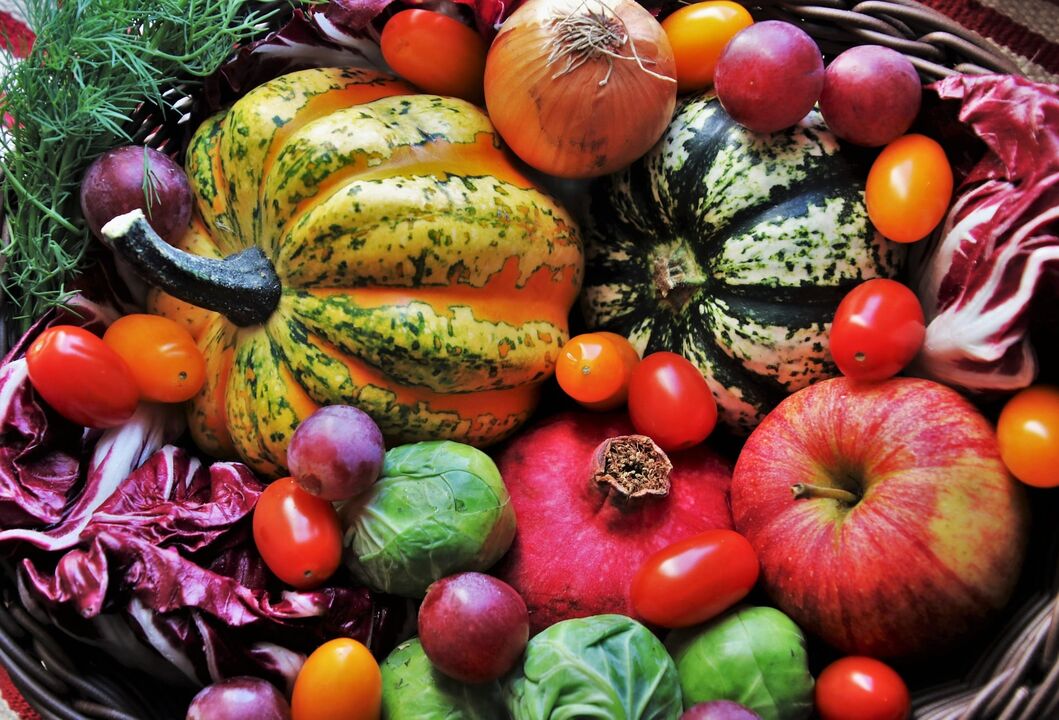
No less common group. It is literally a few hundred years younger than the first and was formed by mutation after the ancient hunters decided to settle in a permanent place and engage in agricultural work.
People with blood type O produce more of the hormone cortisol, which helps deal with stress. In addition, unfortunately, they are prone to alcoholism.
Characteristics of eating behavior (farmer)
25, 000 years ago, meat-eating hunters learned to cultivate the land and receive its gifts. This is the beginning of the development of the rural lifestyle. People began to build settlements, cultivate fields, plant grains and vegetables.
There was less protein food, animals moved away from people and meat became more difficult to obtain.
Sometimes the second blood group is called "vegetarian". The largest number of its speakers live in Europe.
The diet of people with the second blood group should include vegetarian dishes, fish, poultry and dairy products. But it is good to give up coffee, beans and meat.
Allowed and prohibited products
| What can you eat | What to limit | Neutral products | |
|---|---|---|---|
| Meat | — | Beef, veal, lamb, offal (liver, heart), ground beef, ham, bacon, ham, goose and duck meat, pork, rabbit, lard. | Eggs, broilers, chicken, turkey. |
| Fish and seafood | Varieties of salmon, carp, mackerel, fresh herring, cod, mackerel, trout. | Squid, catfish, caviar, halibut, flounder, smoked salmon, catfish, crustaceans, salted herring. | Smelt, seaweed, pike, tuna, perch, sturgeon. |
| Oil | Olive and linseed. | Peanut, coconut, corn, cotton, butter. | Cod oil, margarine, soy and sunflower. |
| Nuts and seeds | Peanuts, pumpkin seeds. | Peanuts from Aegina. | Almonds, hazelnuts, poppy seeds, sunflower seeds, pine nuts and walnuts. |
| Dairy | — | Milk, ice cream, cream, whey, cow's milk cheese. | Yogurt, kefir, goat's milk, cream, sheep and cottage cheese, cottage cheese. |
| Vegetables and fruits | Broccoli, collard greens, cardamom, green onions, leeks, onions, carrots, parsnips, turnips, pumpkin, chicory, spinach, black beans, kidney beans, lentils, cherry plums, pineapple, berries, cherries, blueberries, blackberries, figs, cranberries, lemon, plums, cherries, blackberries, plums, apples. | Tomatoes, white cabbage and cauliflower, mushrooms, olives, hot and sweet peppers, potatoes, rhubarb, tangerines, bananas, oranges. | Paprika, nutmeg, coriander, cloves, radish, beets, cucumbers, zucchini, fennel, Brussels sprouts, radishes, lettuce, celery. |
Sample menu for one day
- breakfast– buckwheat porridge, Korean carrots, green tea.
- Junk food– any permitted fruits or vegetables.
- Dinner– boiled chicken breast with side dish of green beans.
- Afternoon snack- carrot juice.
- Dinner– fruit salad with cottage cheese.
Nutrition according to blood type 3
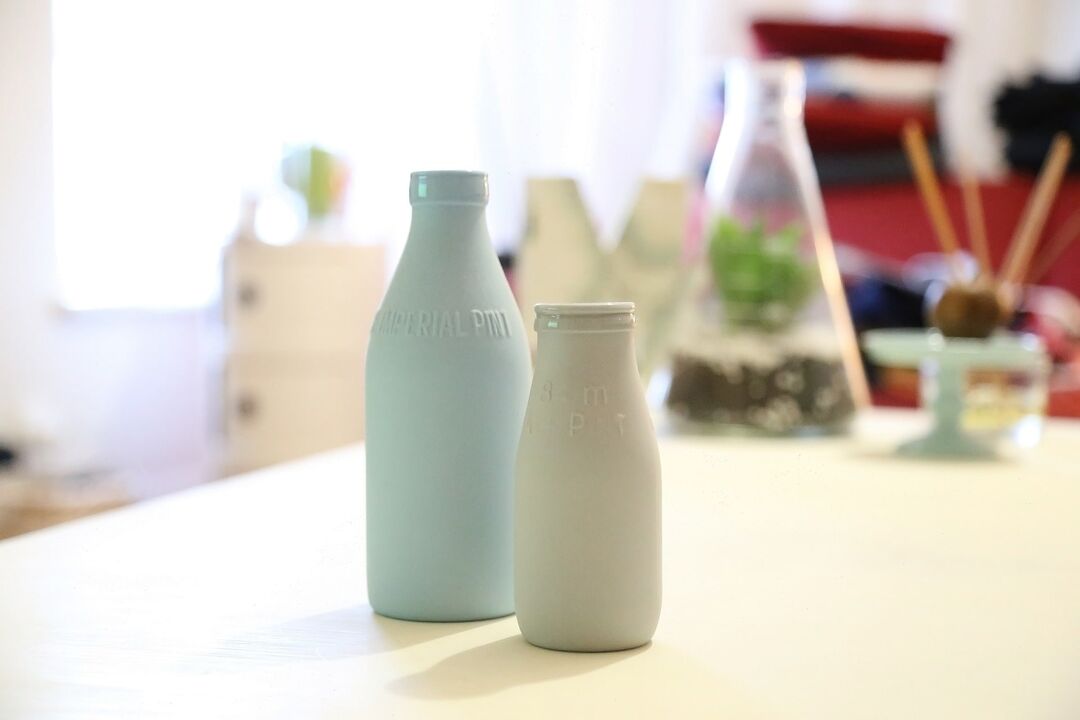
The third group is quite rare and is more characteristic of Asian peoples - they were famous in the old days for their huge herds of animals - horses, cows, goats and sheep. Of course, they had to wander from place to place to feed the animals.
Peculiarities of eating behavior (nomadic)
As soon as milk and dairy products began to be actively introduced into the diet, and this happened about 10, 000 years ago, the blood mutated again.
The largest number of people with the third blood group live in Asia - they are hereditary nomads.
This type of people is the luckiest - they have practically no restrictions, they are omnivores. It is necessary to exclude semi-finished products, smoked meats and alcohol.
Allowed and prohibited products
| What can you eat | What to limit | Neutral products | |
|---|---|---|---|
| Meat | Lamb, rabbit, eggs. | Ham, bacon, pork, duck, goose and chicken, chicken. | Beef and minced meat, turkey, lard. |
| Fish and seafood | Almost all types of fish. | Smoked salmon, caviar, seaweed, eel, crustaceans. | Carp, smelt, perch, herring, tuna, catfish. |
| Oil | Olive. | Margarine, peanut, coconut, corn, cottonseed, soy, sunflower. | Butter and flaxseed, cod liver oil. |
| Nuts and seeds | Poppy. | Peanuts, pine nuts, hazelnuts, pumpkin and sunflower seeds. | Walnuts, almonds. |
| Dairy | Yogurt, kefir, goat's milk, cream, sheep's cheese, cottage cheese. | Ice cream. | Whole milk, cheese, whey, cream. |
| Vegetables and fruits | Cauliflower, white and red cabbage, carrots, broccoli, hot and sweet peppers, beets, watercress, pineapples, berries, bananas, grapes, apples, cranberries, plums. | Corn, lentils, beans, potatoes, rhubarb, radishes, radishes, tomatoes, pomegranates, avocados, pumpkin, blueberries, olives, persimmons. | Melon, spinach, watermelon, grapefruit, cherry, fig, blackberry, raisin, pear, blackberry, blackberry, lemon, kiwi, strawberry, gooseberry, plum, blackberry, nectarine, raisin, peach, sweet cherry, dill, kohlrabi, onion, zuc, asparagus, parsnips, turnips, beets, celery, Jerusalem artichokes. |
Sample menu for one day
- breakfast– boiled eggs, cottage cheese, herbal tea.
- Junk food– seasonal fruits.
- Dinner– creamy mushroom soup, rabbit stew.
- Afternoon snack– natural yogurt with banana pieces.
- Dinner– boiled veal with peas.
Nutrition according to blood type 4
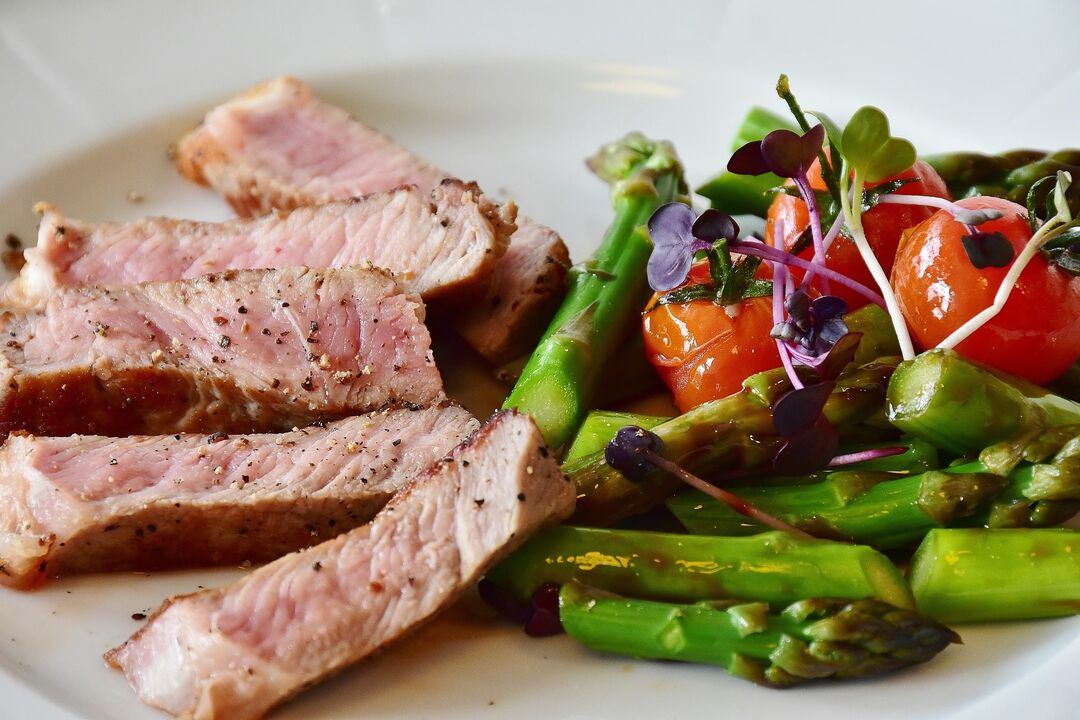
The fourth group was formed by the mixing of the second and third groups after people began to live in large settlements and cities.
People with blood type IV are more likely to have senile dementia and Alzheimer's disease. But they are also universal donors of plasma, which is very valuable for treating burns.
Peculiarities of eating behavior (conundrum)
This blood is the youngest, its age does not exceed two thousand years. It is truly unique in its composition and is resistant to autoimmune and allergic diseases.
These people have a mixed type of diet; there are quite a few dietary restrictions. But it is good for them to eat as much natural organic food as possible.
Allowed and prohibited products
| What can you eat | What to limit | Neutral products | |
|---|---|---|---|
| Meat | Lamb, rabbit, turkey. | Beef and minced meat, ham, bacon, poultry, pork. | Eggs, liver, lard. |
| Fish and seafood | Salmon, caviar, mackerel, perch, sturgeon, pike, perch, cod, tuna, trout, mackerel. | Squid, calamari, smoked salmon, halibut, salted herring, eel, hake. | Seaweed, carp, smelt, perch, catfish, fresh herring. |
| Oil | Olive. | Margarine, butter, coconut, corn, cottonseed, sunflower. | Peanut, soy, flaxseed, cod liver oil. |
| Nuts and seeds | Peanuts, poppy seeds, walnuts. | Pumpkin and sunflower seeds, hazelnuts. | Almonds, peanuts, pine nuts. |
| Dairy | Yogurt, kefir, goat's milk, sheep's cheese, cottage cheese, cream. | Ice cream, cream, whole milk. | Whey, cheese, skimmed milk, |
| Vegetables and fruits | Cabbage, beets, potatoes, figs, celery, kiwi, cherries, pineapple. | Black olives, green peppers, corn, bananas, coconuts, pomegranate. | Carrots, kohlrabi, horseradish, Chinese cabbage, apples, apricots, watermelon. |
Sample menu for one day
- breakfast– wholemeal bread, tofu (bean curd), radish salad.
- Junk food- vegetables or cottage cheese.
- Dinner– baked fish with mashed potatoes, carrot salad.
- Afternoon snack- yoghurt.
- Dinner– scrambled eggs, lettuce, wholemeal bread.
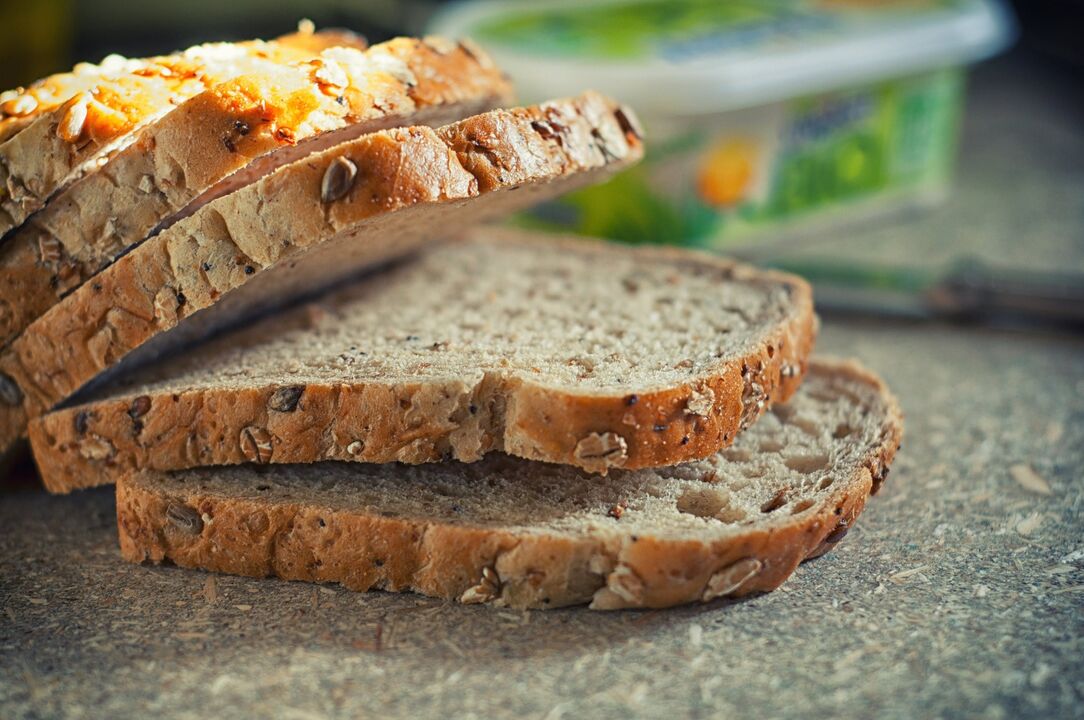
Does the Rh factor affect nutrition?
From school we know that there are four blood groups in total, and taking into account the Rh factor, their number is doubled. It was first discovered after research on rhesus monkeys, hence its name. The Rh factor can be positive and defined (Rh+) or negative (Rh-). It indicates the presence or absence of an antigen (protein) found on the surface of red blood cells (erythrocytes).
But in fact, the division of blood into only four groups is arbitrary - if we take into account all the properties of blood, then there will be many more of them. D'Adamo ignores this fact.
In D'Adamo's famous book the effect of the Rh factor is not mentioned at all. Since more than 80% of the world's population has a positive Rh factor, the diet is designed specifically for these people.
Diet contraindications
Without prior consultation with your doctor, it is forbidden for people with the following diseases to follow a diet on their own:
- Diabetes;
- chronic digestive problems;
- hematopoietic disorder;
- ARVI.
In addition, if any illness has worsened, it is also not recommended to go on any diet until you feel better.
Do not experiment on yourself in any case during pregnancy or breastfeeding; remember that you are responsible not only for your life, but also for the baby.
Weight loss reviews
- "This is an ideal diet for people who have no health problems. But, if you are overweight, then in advance there are all kinds of diseases, so the diet stops working. It is convenient, of course, that there is a wide variety of products, but this method does not suit me - the doctor forbade eating all the products that are allowed on the table. It turns out that the table is almost 90% against the doctor's recommendations.
- "I have no medical training, but I can clearly see the huge disadvantages - the diet is completely unscientific. One of them is that people with the second group must rely on vegetarian food, and those with the third and fourth are omnivores, but they come exactly from the second. Generally, I won't even try. "
- "In a few months I lost 10 kilos! The blood type diet is very cool, it is easy to lose weight. I think you can stay on this diet for the rest of your life. I recommend this great diet to everyone who wants to lose weight! ».
- "The blood type diet is complete nonsense. Do not torture yourself with these healthy, harmful and neutral products. Eat everything in moderation, without fanaticism. If you want something sweet, eat 1-2 candies, not whole chocolate, if you want bread, cut off a piece and eat it, but don't be hungry. "
- "I showed the approved products for the second blood group at work - the whole team laughed, wiped away tears and ate a meat cutlet (yes, yes, half of our team is "farmers"). Honestly, I have never seen a more stupid and completely unacceptable diet! ».
Doctors' opinions and criticism
The blood test diet was not approved by doctors. After all, each person is so individual that it is necessary to conduct complex research and have data on more than sixty specific genes responsible for endocrine and enzyme activity and only then create a diet. And the blood type in this case is a very generalizing factor and cannot be responsible for the correctness of the menu of a particular person.
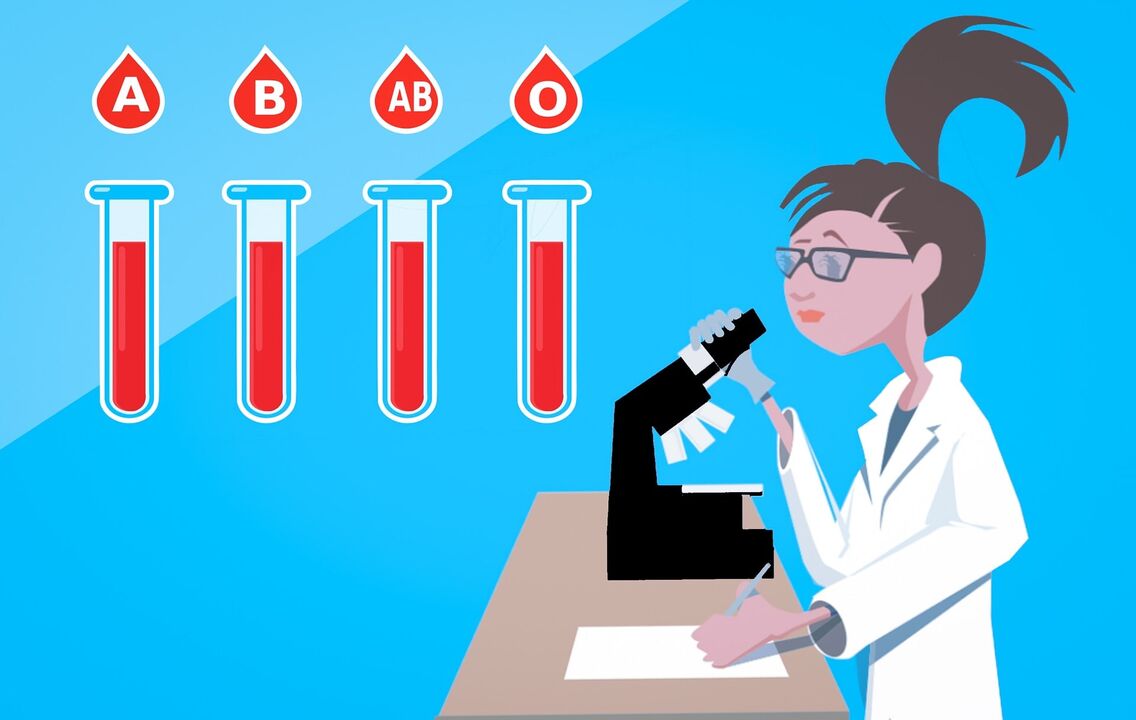
So doctors clearly believe that D'Adamo's theory has no scientific basis, is poorly studied, but does not cause any particular harm. And in some cases, it even helps to stimulate the body and activate a faster metabolism.
In addition, D'Adamo included really harmful products among the prohibited foods for all blood groups - sausages and smoked meats, store sauces, ice cream, carbonated drinks, alcohol and some others.
Well, don't forget the placebo effect - a person believes and loses weight.
Advantages and disadvantages of dieting
Advantages:
- a huge list of allowed products.
- easy to carry?
- the ability to create a varied and balanced menu.
- you can stick to it for a long time.
Defects:
- there is no clear plan for how, when and in what quantities to consume certain products;
- the diet has no scientific basis, all conclusions are very general.
- another profitable business for nutritionists and of course the creator himself.
conclusion
As practice shows, some people managed to lose weight with this diet. But they note that the results don't last—the weight always comes back. So you should eat right almost your entire life.














































































